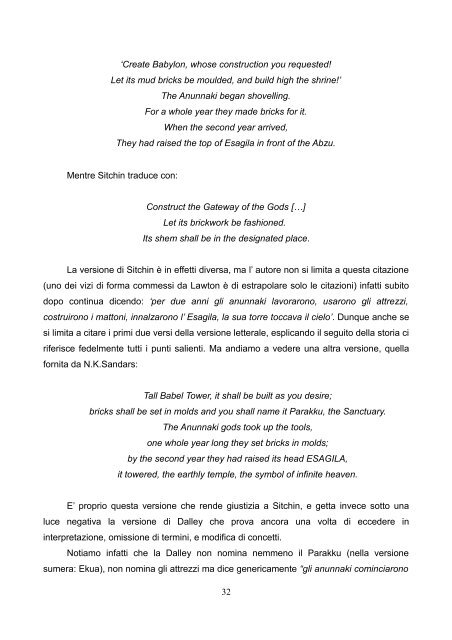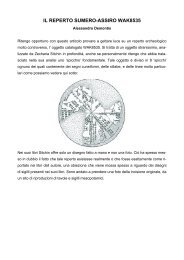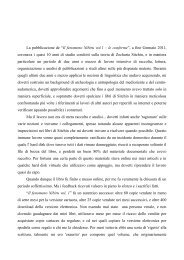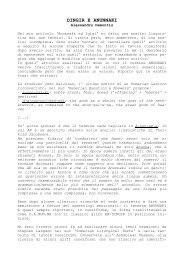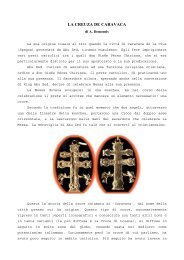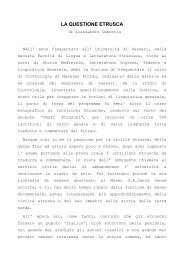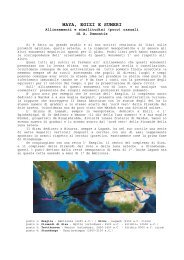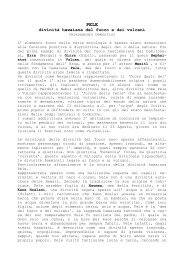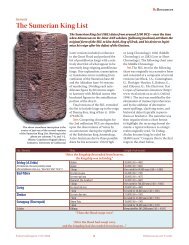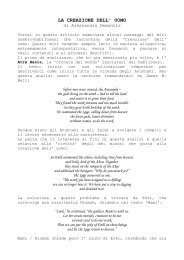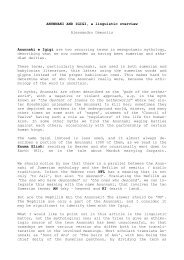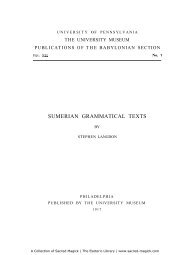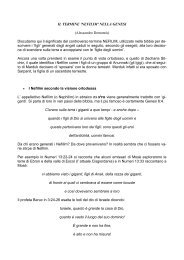LE MOTIVAZIONI DI IAN LAWTON Per comprendere bene il motivo ...
LE MOTIVAZIONI DI IAN LAWTON Per comprendere bene il motivo ...
LE MOTIVAZIONI DI IAN LAWTON Per comprendere bene il motivo ...
Create successful ePaper yourself
Turn your PDF publications into a flip-book with our unique Google optimized e-Paper software.
‘Create Babylon, whose construction you requested!<br />
Let its mud bricks be moulded, and bu<strong>il</strong>d high the shrine!’<br />
The Anunnaki began shovelling.<br />
For a whole year they made bricks for it.<br />
When the second year arrived,<br />
They had raised the top of Esag<strong>il</strong>a in front of the Abzu.<br />
Mentre Sitchin traduce con:<br />
Construct the Gateway of the Gods […]<br />
Let its brickwork be fashioned.<br />
Its shem shall be in the designated place.<br />
La versione di Sitchin è in effetti diversa, ma l’ autore non si limita a questa citazione<br />
(uno dei vizi di forma commessi da Lawton è di estrapolare solo le citazioni) infatti subito<br />
dopo continua dicendo: ‘per due anni gli anunnaki lavorarono, usarono gli attrezzi,<br />
costruirono i mattoni, innalzarono l’ Esag<strong>il</strong>a, la sua torre toccava <strong>il</strong> cielo’. Dunque anche se<br />
si limita a citare i primi due versi della versione letterale, esplicando <strong>il</strong> seguito della storia ci<br />
riferisce fedelmente tutti i punti salienti. Ma andiamo a vedere una altra versione, quella<br />
fornita da N.K.Sandars:<br />
Tall Babel Tower, it shall be bu<strong>il</strong>t as you desire;<br />
bricks shall be set in molds and you shall name it Parakku, the Sanctuary.<br />
The Anunnaki gods took up the tools,<br />
one whole year long they set bricks in molds;<br />
by the second year they had raised its head ESAGILA,<br />
it towered, the earthly temple, the symbol of infinite heaven.<br />
E’ proprio questa versione che rende giustizia a Sitchin, e getta invece sotto una<br />
luce negativa la versione di Dalley che prova ancora una volta di eccedere in<br />
interpretazione, omissione di termini, e modifica di concetti.<br />
Notiamo infatti che la Dalley non nomina nemmeno <strong>il</strong> Parakku (nella versione<br />
sumera: Ekua), non nomina gli attrezzi ma dice genericamente “gli anunnaki cominciarono<br />
32


